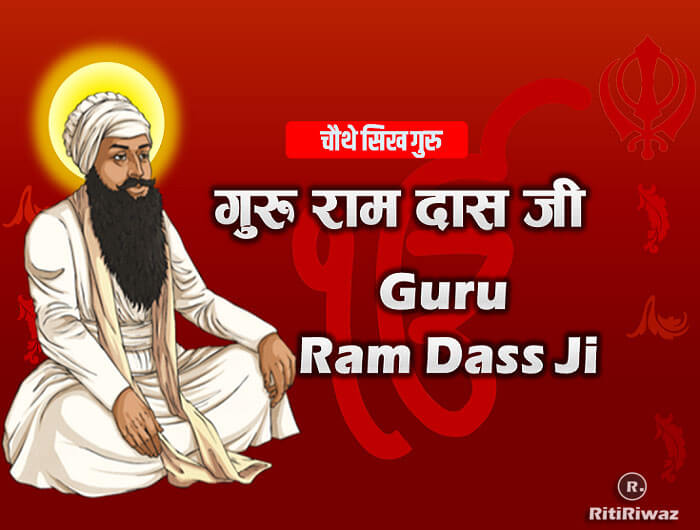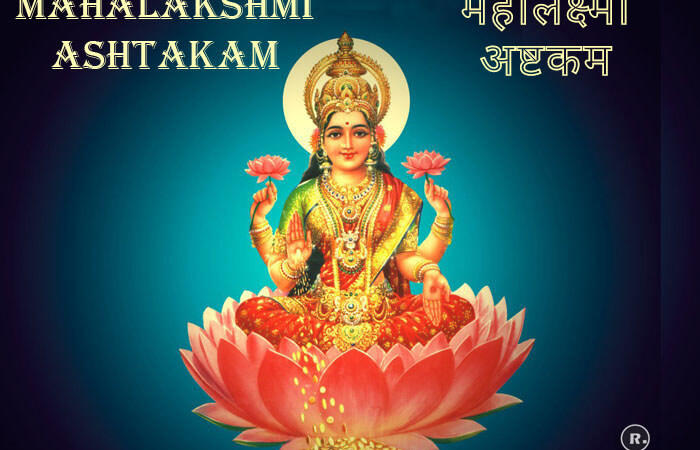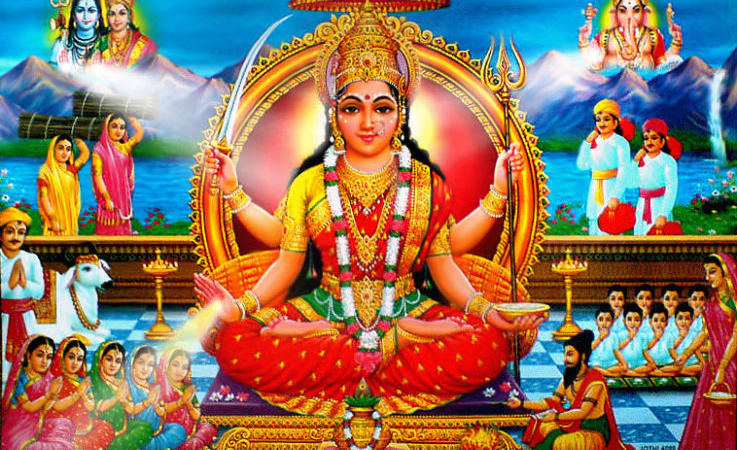Biography of Guru Ram Das (1534 – 1581)

Guru Ram Das (Gurmukhi: ਗੁਰੂ ਰਾਮ ਦਾਸ) was the Fourth Sikh Guru of the ten Gurus of Sikhism. He is known for founding the town of Ramdaspur, later known as Amritsar, in Punjab. Ram Das composed 638 hymns or about ten percent of hymns in the Guru Granth Sahib. While Guru Amar Das introduced the manji system of a religious organization, Ram Das extended it by adding the Masand institution.
The masand were Sikh community leaders who lived far from the Guru, but acted to lead the distant congregations, their mutual interactions, and collect revenue for Sikh activities and temple building.
Fast Facts
Name: Bhai Jetha Mal Sodhi
Famous name: Guru Ram Das
Birth: 24 September 1534
Place of Birth: Chuna Mandi, Lahore
Father: Hari Das
Mother: Daya Kaur
Wife: Bibi Bhani (Daughter of Guru Amar Das)
Children: Three sons, Prithi Chand, Mahadev, and Guru Arjan
Grand Children: Guru Hargobind
Guruship: First September 1574 A.D. at Goindwal Sahib.
Death: September 1,1581 (aged 46)
Death Place: Goindval town of Punjab.
Spiritual Predecessor: Guru Amar Das
Spiritual successor: Guru Arjan
Known for: founder of Amritsar city
His Messages :
Be a true Sikh.
Imbibe the name of God.
Sing the glory of Gurus
Early Life
Guru Ram Das was born on 24th September 1534 A.D. (Samat 1591) at Chuna Mandi, Lahore. His father was Hari Das and his mother was Daya Kaur (Anup Kaur before marriage). His grandfather Thakar Das, a Khatri of Soghi Clan, was a shopkeeper at Chuna Mandi, Lahore. His father Hari Das also became a shopkeeper, both his parents were very religious. His parents didn’t have any child after twelve years of marriage, so they prayed to God to bless them with a child. After twelve years a son was born whom they named Ram Das. Ram Das was known by name Jetha in his early life. He had a younger brother Hardyal and a younger sister Ram Dasi.
Both parents didn’t live long and died when Jetha was seven years old. His maternal grandmother took care of the children but the poor lady was not able to support them. At the age of nine, Jetha started selling boiled grams and boiled wheat. On one occasion Jetha came across holy men, he distributed his boiled grams among them free of cost and was often scolded by his grandmother.
Once Bhai Jetha happened to hear about Guru Amardas ji and then he joined a group of devotees to visit him at Goindwal. There he was enchanted with the holy atmosphere of Goindwal and decided to settle there. There he resumed his profession of selling boiled grams and he also began to take part in the religious congregations held by Guru Amardas Sahib.
He served in the langar by washing utensils, serving drinking water to the Sangat, and doing other jobs for both Sangat and Pangat. In 1552 Amar Das occupied the religious throne of Guru Nanak. It was Mansa Devi, wife of Guru Amar Das who selected Jetha as a groom for her daughter Bibi Bhani and they were married in 1553 A.D. at Goindwal and remained in service of the Guru. Inspite of becoming the son-in-law of Guru Amardas Ji, Bhai Jetha treated him as ‘Guru’ and After the marriage, he stayed with his father-in-law and deeply associated himself with the activities of Sikhism in the Gurdwara.
Bhai Jetha Ji and Bibi Bhani Ji had three sons; Prithi Chand Ji, Mahadev Ji, and Arjan Dev Ji (Guru) Ji, and commanded the full confidence of Guru Amardas Ji and often accompanied him when the latter went on long missionary tours to different parts of India. He was directed by Guru Amar Das to set a new township called ‘Guru-Chak’ later on known as Chak Ramdas or Ramdaspura. Subsequently, when Guru Ram Das had a holy pool constructed on this spot, the place came to be known as Amritsar or the ‘Pool of Immortality’.
Guru Ram Das composed his own wedding day to Bibi Bhani and this composition came to be known as the Lavaan. He also wrote many other compositions like the four songs known as the Engagement Shabads.
Guruship
As Guru Amardas Ji was getting older, he was in search of his successor. Guru Ji’s eldest daughter, Bibi Dani was married to Rama Ji who was a zealous Sikh. Guru Amar Das decided to put both his sons-in-law to the test. He asked them to make a platform beside the Baoli.
They both made the platform many times, but the Guru did not approve of either of the platforms saying that these are not what I desired. At this, Rama Ji gave up and dissented and said that it was exactly as Guruji had told and that he fully understood the requirements to fully conform to them. Bhai Jetha build it again and again and was demolished every time, but he rebuilt it several times.
Jetha Ji lastly was in tears and begged “I am a fool and with my limited understanding, cannot comprehend your vision. Kindly bless me so that my hands do your bidding and I may be able to erect the platform of your vision.” On hearing this, Guru Amardas Ji smiled and blessed him saying, “Obeying my order, you have built the platform seven times, without any expectation. The Guru’s throne rightfully belongs to you.”
Baba Budha Ji annotated Jetha and renamed him, Guru Ramdas. Guru Amar Das ji placed coconut and five paise at his feer and declared him as his successor Guru. Before his departure, Guru Amar Das ji also handed over the written records of previous Gurus to him at the time of his succession.
Guru Ram Das gave the Sikh religious community a definite and concrete shape. He founded the city of Amritsar—not only as a Sikh religious center but also as a center of trade with the purpose of encouraging Sikhs to prosper economically. The Guru defined distinct rituals and practices based on Gurbani. Such rituals were performed for certain life transitions such as birth and marriage. He also canonized in his writings, the daily spiritual practice of the Sikhs.
In keeping with the first three Gurus, Guru Ram Das also wrote many hymns which were later included in the Sri Guru Granth Sahib, the Sikh holy book. His compositions repeated a message similar to the message of the earlier Gurus—serve others selflessly, seek the company of saints, meditate on God’s name, follow the instructions of the Guru and rely on the true Guru’s grace for liberation.
The Gurus that came before Guru Ram Das also spoke of human equality irrespective of a person’s status by birth. However, it seems that the conversion of the so-called low-caste to the Sikh faith gained impetus with Guru Ram Das. He composed several hymns that invited the low-caste men and women to join the Sikh faith. During his Guruship period, Guru Ram Das always emphasized the value of Sewa, which should be the primary duty of every Sikh and his family.
Death
Guru Ram Das died on 1 September 1581, in Goindval town of Punjab. He was only 47 years old and had reigned as Guru for a period of almost seven years. Of his three sons, Ram Das choose Arjan, the youngest, to succeed him as the fifth Sikh Guru.
He appointed his own son as his successor, and unlike the first four Gurus who were not related through descent, the fifth through tenth Sikh Gurus were the direct descendants of Ram Das.
The choice of successor, as throughout most of the history of Sikh Guru successions, led to disputes and internal divisions among the Sikhs. The elder son of Ram Das named Prithi Chand is remembered in the Sikh tradition as vehemently opposing Arjan, creating a faction Sikh community which the Sikhs following Arjan called as Minas and is alleged to have attempted to assassinate young Hargobind.






